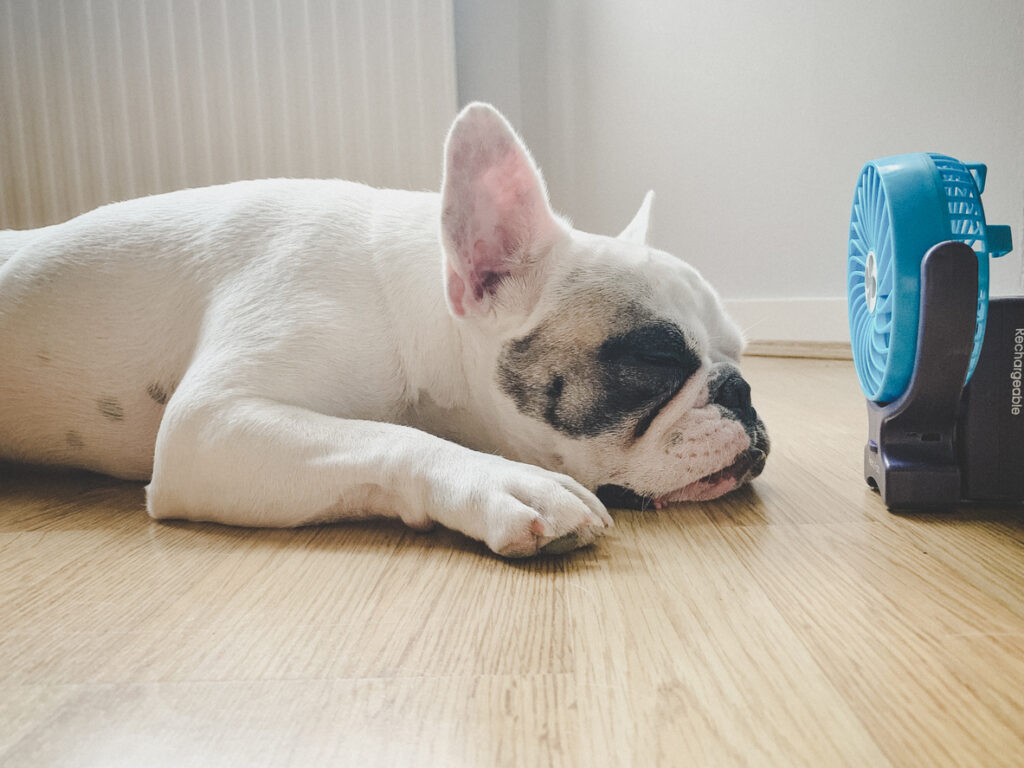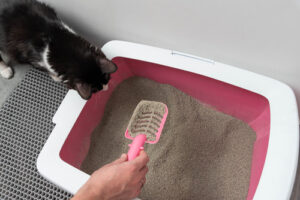How to Prevent Dog Heat Rash
Similar to humans, dogs may experience an irritating heat rash during the warm and humid summer season. Dogs with sensitive skin, who remain damp and don’t dry off, or live in hot and humid regions are particularly susceptible to developing heat rashes.
The best way to prevent dogs from getting a heat rash is to keep them cool and indoors during hot weather. While cool water can help keep dogs cool outside in hot weather, it is also a good idea to dry them off right when they come back inside. This is because heat and moisture is the perfect recipe for heat rash on dogs, especially in areas like the armpits, groin, and belly.
In this article, we will be explaining everything that dog owners need to know about heat rashes on dogs. This will include getting into what causes heat rash on dogs, how it can be treated, and how heat rash on dogs can be prevented. We will also be answering some commonly asked questions about heat rash on dogs as well. Let’s dive right into it.
What Causes Heat Rash on Dogs?
Heat rash on dogs is caused by excessive heat. Moisture in the air or on the body can make a dog more susceptible to developing heat rash as well. Breeds such as Bulldogs and Pugs, which have skin folds and wrinkles, are particularly prone to heat rash.
Additionally, dogs with a history of dermatitis, hot spots, and other skin conditions are more likely to develop a heat rash than other dogs. However, any dog could potentially get a heat rash under the right circumstances.
What Does a Heat Rash on Dogs Look Like?
A heat rash can appear a bit differently depending on the dog and how severe it is. Here is what a heat rash can look like on dogs.
- Pink or red and irritated-looking skin (especially under skin folds, but can happen in other areas of the body as well)
- Boils or small pimple-like spots in a concentrated area (e.g., on the belly or around the groin)
- Scabs and sores in tender-looking areas (usually occur from excessive scratching)
In addition to the presence of a skin rash or irritated-looking skin, your dog will likely scratch or lick the affected areas excessively. This is because heat rashes are often itchy or sore.
How is Heat Rash on Dogs Diagnosed?
Most of the time heat rash on dogs is diagnosed by a vet through a physical examination. During an exam, your vet will look over your dog and ask the owner questions to get their medical history.
In addition, your vet may check your dog for a skin infection. Unfortunately, skin infections can occur when a dog excessively scratches or licks at their heat rash. Skin infections will require additional treatment.
Can Heat Rashes on Dogs be Treated?
Yes, heat rashes on dogs can be treated. A vet will usually treat a heat rash on dogs by prescribing a cream that will soothe their skin and allow the rash to heal properly. They will also likely advise that you prevent your dog from scratching or licking its rash.
In addition, a vet may prescribe additional medication to treat a skin infection if your dog has one. Skin infections on dogs are usually treated with medicated creams and antibiotics.
Are There Any Home Remedies for Heat Rash on Dogs?
It is crucial to seek veterinary attention for heat rashes on dogs to ensure appropriate treatment and prevent the condition from worsening. There are some steps that can be taken to manage the heat rash until veterinary care is available. Placing a cool, damp cloth on the affected area can help alleviate the discomfort and irritation associated with the rash. Keeping the dog out of direct sunlight and in a cool environment can also prevent the heat rash from exacerbating. Additionally, avoiding activities that can cause overheating, such as excessive exercise, can also help alleviate symptoms and prevent further irritation.
How to Prevent Heat Rash on Dogs
If your dog is prone to heat rashes, don’t worry. There are some easy ways that you can prevent heat rash in even the most susceptible of dogs. Here are some ways that you can prevent your dog from getting a heat rash.
- Walk your dog in the cool hours of the day (in the early morning and at night)
- Keep your dog inside and out of the sun on hot days
- Keep your dog cool on hot days
- Keep skin folds and wrinkles clean and dry

Are Hot Spots Different from Heat Rash on Dogs?
Yes, hot spots are different that heat rashes on dogs. A hot spot is a small red and inflamed area on the skin. Though also very itchy, hot spots are typically caused by allergies. Meanwhile, heat rashes are caused by excessive or prolonged heat exposure.
Can Dog Heat Rash Go Away on its Own?
Unfortunately, dog heat rashes are not likely to go away on their own. This is because the skin is often very itchy and irritated, leading to dogs scratching and licking at their rash excessively.
With all this licking and scratching, the rash will likely get worse or even become infected without proper treatment. As a result, it is best to take your dog to the vet when they have any type of rash, even a heat rash.
Why Does My Dog Have a Rash on His Belly and Inner Thighs?
It is pretty common for dogs to get a heat rash on their bellies and inner thighs. This is especially true if they have been laying on hot surfaces like hot pavement or cement. It is always best to get your dog’s rash checked out by a vet to determine the cause and receive proper treatment.
Conclusion
Preventing heat rash on dogs requires taking proactive measures to manage their exposure to heat and humidity. Providing adequate hydration, keeping them cool, and limiting physical activity during hot and humid weather conditions can help reduce the risk of heat rash. Additionally, regular grooming, especially in breeds with skin folds and wrinkles, can help keep their skin clean and dry, reducing the likelihood of heat rash. If a heat rash does develop, seeking veterinary attention promptly and taking steps to alleviate symptoms can help manage the condition and prevent it from worsening. By following these guidelines, pet owners can help keep their furry companions comfortable and healthy during the summer months.
If you think your dog has a heat rash near Montgomery, AL, Montgomery Veterinary Associates is here for you. Book an appointment with us online today!





